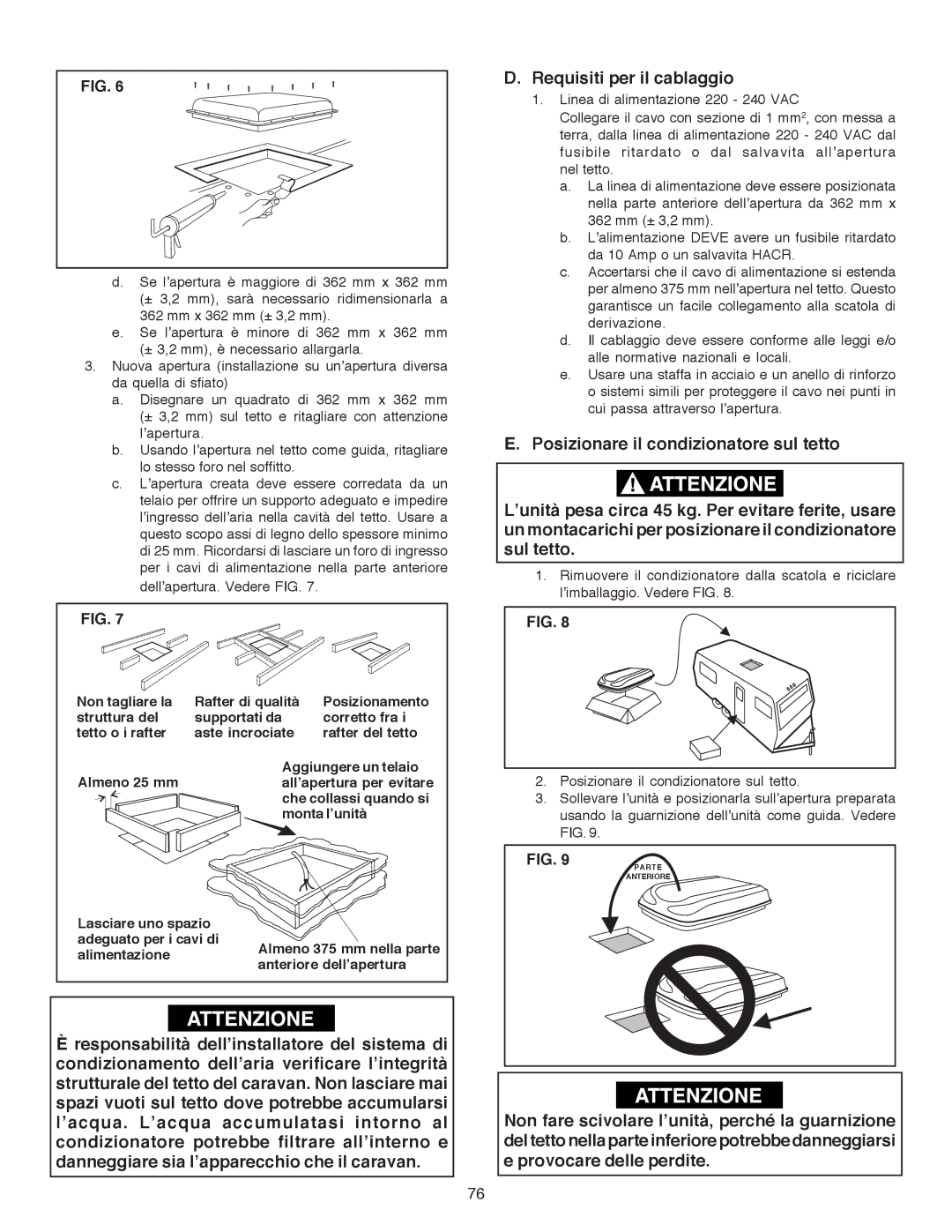B3200 specifications
The Dometic B3200 is an advanced air conditioning unit designed specifically for recreational vehicles (RVs), providing efficient cooling and heating capabilities that ensure comfort during your travels. This model has garnered attention for its robust features, reliable performance, and user-friendly operation, making it a favorite among RV enthusiasts.One of the standout features of the Dometic B3200 is its impressive cooling and heating capacity, which is vital for maintaining a comfortable indoor climate regardless of external weather conditions. The unit can effectively cool an RV space, providing relief during hot summer months, while its heating function ensures warmth during colder seasons. This dual functionality allows users to enjoy their RVs year-round, making it a versatile choice for various climates.
Furthermore, the B3200 incorporates state-of-the-art technology that enhances its efficiency and performance. The unit utilizes a powerful compressor and a high-efficiency fan, which work in tandem to ensure optimal air circulation. This not only contributes to faster cooling and heating but also minimizes energy consumption, allowing users to save on power usage during their trips.
Another key characteristic of the Dometic B3200 is its quiet operation. The design includes sound-dampening technology that reduces noise levels, ensuring that users can enjoy a peaceful environment inside their RV. This feature is particularly appreciated during nighttime or quiet moments, where excessive noise can be disruptive.
The Dometic B3200 is built with durability in mind, featuring a sturdy exterior designed to withstand the rigors of travel and outdoor conditions. The unit is also relatively lightweight, an essential factor for RV owners who need to maintain weight limits to ensure vehicle safety and fuel efficiency.
User-friendliness is another notable aspect of the B3200. The air conditioner comes with an intuitive control panel that allows for easy adjustments to temperature settings and operational modes. This simplicity means that even users unfamiliar with RV systems can operate the unit without hassle.
In summary, the Dometic B3200 is a highly efficient, dual-function air conditioning system that perfects the balance between comfort and convenience. With its state-of-the-art technology, quiet operation, and durable construction, it stands as an ideal choice for any RV owner looking to enhance their travel experience. Whether cruising through summer heat or winter cold, the B3200 ensures that comfort never takes a back seat.

